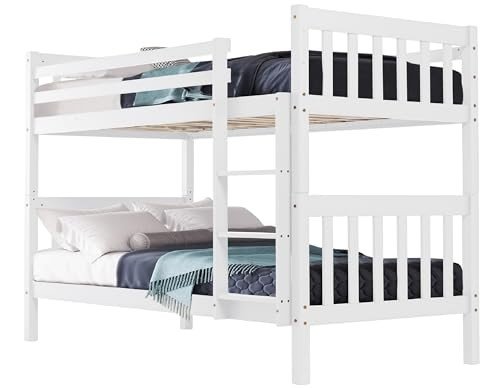A Comprehensive Guide to Children's Bunk Beds: Styles, Benefits, and Safety Considerations
Bunk beds have become a popular option for households seeking to maximize space and offer an enjoyable sleeping environment for kids. With their unique design, they offer an innovative and useful option for shared bedrooms, playrooms, or perhaps guest lodging. This short article checks out the different designs of children's bunk beds, their benefits, security considerations, and answers some regularly asked concerns.
The Allure of Bunk Beds
Children's bunk beds are more than simply space-saving structures; they are also an entrance to daring dreams and creative play. Below is a comprehensive assessment of their numerous benefits.
Advantages of Bunk Beds
- Space-Saving: Bunk beds efficiently make use of vertical space, making them an ideal choice for smaller sized rooms.
- Playful Design: Many bunk bed designs consist of slides, camping tents, and themed elements, triggering creativity and excitement.
- Partner Sharing: Bunk beds are best for siblings sharing a room or accommodating sleepovers.
- Versatile Use: Some models can be separated into 2 individual beds, using versatility as children grow.
- Storage Options: Many bunk beds come with built-in drawer storage or racks, further enhancing their functionality.
Styles of Children's Bunk Beds
The range of bunk beds available today caters to various preferences and needs. Below is an introduction of some popular designs.
| Design | Description | Best For |
|---|---|---|
| Standard Bunk Bed | A conventional style including one bed stacked above another. | Brother or sisters sharing a space. |
| Loft Bed | Similar to a bunk bed without the bottom bunk, permits a workspace or play area listed below. | Minimal space for play/desk. |
| L-Shaped Bunk Bed | Two beds arranged in an L-shape, typically with extra sections for storage or play. | Special room layouts. |
| Twin Over Full | A twin bed over a full bed, accommodating various sleep needs. | Growing kids and teens. |
| High Sleeper | Stands even higher than a loft bed, usually including a desk or play area below. | Older kids needing more play/desk space. |
| Tent Bunk Bed | Bunk beds with a canopy or tent-like structure, developing a relaxing, fun space. | Active and creative kids. |
Secret Features to Consider
When picking the right bunk bed for kids, the following functions deserve considering:
- Material: Bunk beds can be made from wood, metal, or a combination. click through the following website page has its special aesthetic and resilience.
- Weight Capacity: Always confirm the weight limit of the bunk bed to ensure it can accommodate your children securely.
- Safety Rails: Ensure the leading bunk has durable rails to prevent falls.
- Ladder Security: A well-designed ladder needs to offer easy and safe access to the upper bunk.
- Completing: Ensure any surfaces are non-toxic and safe for children.
Security Considerations
Safety is vital when it pertains to kids's bunk beds. The following standards ought to be followed:
- Age Appropriateness: Generally, children under six years old need to not sleep in the upper bunk due to security threats.
- Durable Construction: Ensure the frame and products are solid and can support the weight without drooping.
- Regular Maintenance: Periodically look for loose screws, bolts, or other parts that may need tightening.
- Clear Play Area: Keep the location around the bunk bed devoid of toys and barriers to minimize tripping risks.
Setting Rules for Safe Use
Developing guidelines for bunk bed use will help ensure security:
- Limit Jumping and Climbing: Children must be advised against jumping from the leading bunk and climbing up on the sides.
- Supervising Sleepovers: Monitor young visitors while they are using the bunk bed for the very first time.
- Inform on Ladder Use: Teach how to use the ladder safely, highlighting the importance of facing the ladder when climbing or down.
Regularly Asked Questions
1. What age is proper for a child to sleep in the leading bunk?
The majority of producers advise that kids need to be at least six years old to oversleep the upper bunk. This guideline is created to mitigate the risk of falls.
2. Can bunk beds be customized?
Yes, lots of manufacturers provide personalized choices, including colors, products, and additional functions like drawers or desks.
3. Are bunk beds safe for weight?
Bunk beds have weight limitations, generally ranging from 200 to 400 pounds, depending on the model and product. Always examine the producer's specs.
4. How do I preserve and clean up a bunk bed?
Routinely examine for loose parts, keep the bed tidy by cleaning down surface areas, and make sure the bed linen is fresh to promote a safe and hygienic sleep environment.
5. Can bunk beds be separated into individual beds?
Numerous bunk beds feature an option to separate them into two specific beds, supplying long-lasting flexibility.
Children's bunk beds are more than mere furnishings; they are a practical, versatile, and creative element of a child's space. With different designs offered and many security factors to consider to bear in mind, parents can choose the perfect bed that fits their space, meets their kids's requirements, and imparts a sense of experience. By understanding the advantages, designs, and precaution related to bunk beds, households can create a wonderful and protected sleeping environment for their children. Whether for brother or sisters sharing a room or space-saving solutions, bunk beds remain a beloved option for numerous homes.

